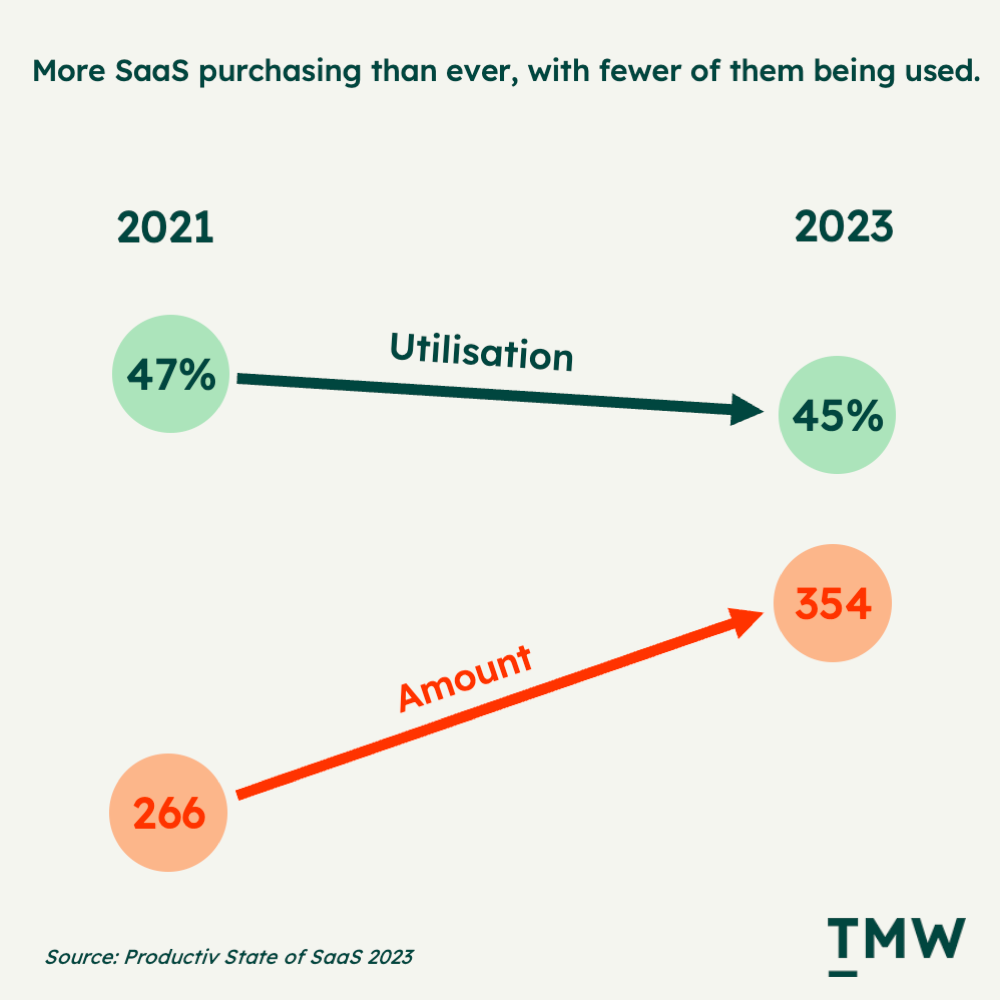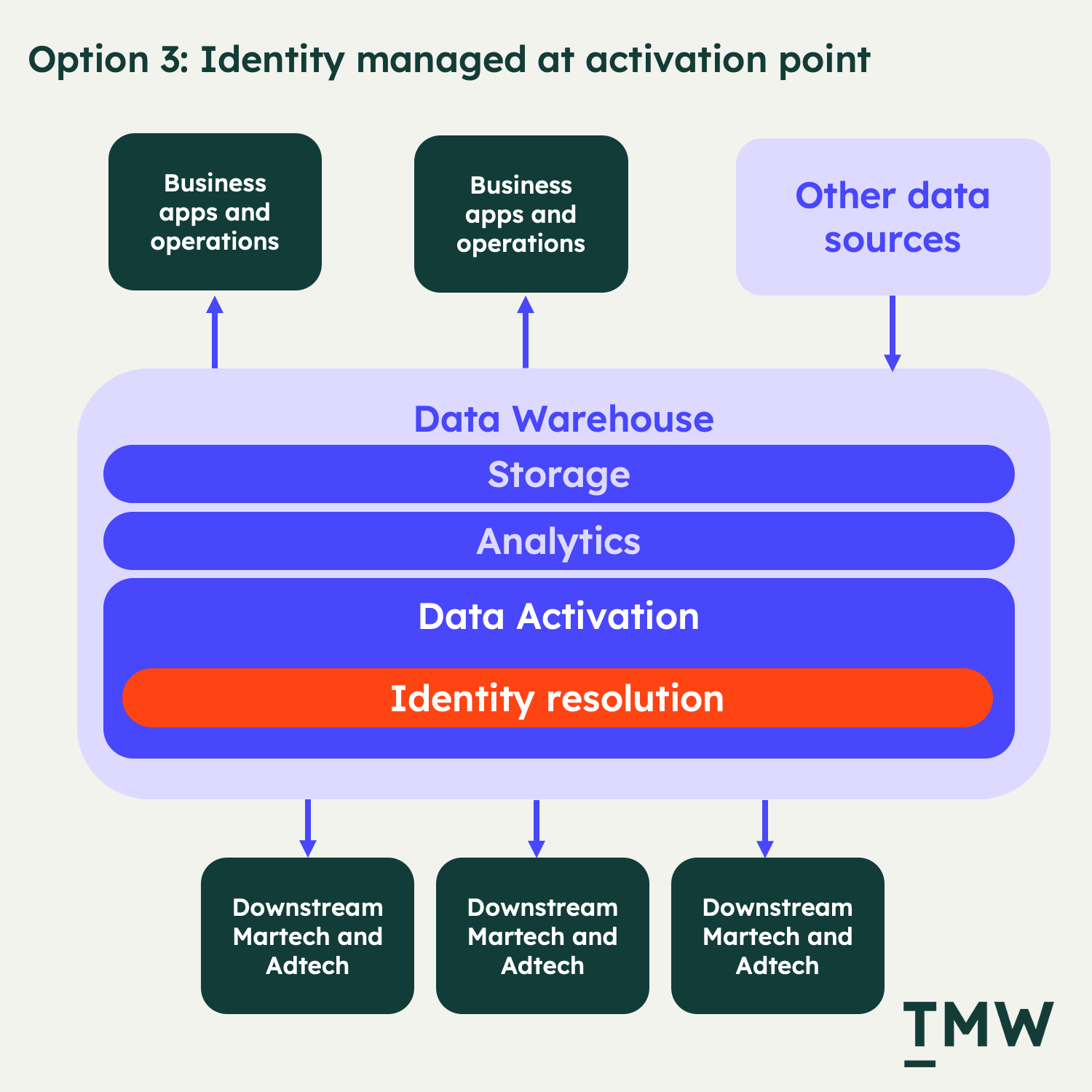TMW Q3 | The quarter that was
Welcome to The Martech Weekly, where every week I review some of the most interesting ideas, research, and latest news. I look to where the industry is going and what you should be paying attention to.
👋 Get TMW every Sunday
TMW is the fastest and easiest way to stay ahead of the Martech industry. Sign up to get the full version delivered every Sunday for this and every TMW, along with an invite to the TMW community. Learn more here.
The quarter that was
Martech utilization, warehouse native identity, and regulating experience: Quarter 3 has delivered a season of lawsuits, exciting new product announcements, and great research exposing how Martechers are really getting value out of technology. For the quarter that was newsletter, we look at the most popular essays from the past three months by highlighting the top three with a synopsis, a quote, a chart, and a reflection.
Here’s to another big quarter. Enjoy!
🥇 First Place: TMW #133 | The underutilized
The underutilized is an exploration into the question: Why aren’t more marketing technologies being used to their fullest extent in business? Inspired by an enterprise brand that spends millions on Martech strategy and – after a decade – has ended up nowhere, this essay unpacks some of the major problems in Martech buying, implementation, and ongoing use. I also explore what seems to be the post-COVID malaise, where marketing budgets for Martech are decreasing and the reality that the two years of sustained consumer attention online is now over has truly sunk in.
A quote
“Over 2023, almost all State of Martech reports are in rare agreement with each other: there’s a juxtaposition of brands buying more Martech, but the utilization of these technologies is on the decline. This leads me to think that we’re heading towards a bubble in Martech that is sure to pop. The telltale signs are growing companies and the number of companies entering the space, coupled with a lack of real, tangible value that these companies are creating for their customers.”
A chart

A reflection
It now seems as though the Martech industry is stabilizing as we close out the year. But, the problem of the underutilized remains an unchanging paradigm that plagues the industry. In a newly created Gartner report, there’s a good deal of talk from marketers seeing a shift in a lot of Martech management heading back to IT. This may help solve the problem in one sense – IT folks are just better at implementing technology – but might hurt Martech teams even more as the dividing departmental wall might make it harder to quickly activate and use data.
On a call last week, I was interviewed by Uptempo about what folks in marketing operations should focus on, and the only thing I could add was to really sweat the assets – Martech apps should be close to breaking point before leveling up into new features and software. I do think that a shift to essentialism in the Martech domain will continue to force vendors into thinking about real, tangible value, instead of shiny features and pretty pitch decks.
🥈 Second Place: TMW #135 | Towards warehouse-native identity
Quarter 3 really felt like a race to build the next identity graph in Martech in the data warehouse. We saw Hightouch and RudderStack announce their approach to building identity features in the cloud and a flurry of activity from the traditional CDP category. And there’s a lot of talk about reducing the tech skills and effort needed to build identity into the data warehouse. This sits in the backdrop of an industry that’s growing wary of ideas like the “Customer 360” or “Single View of Customer” value proposition, which makes for an interesting and duplicitous season for thinking about where customer identity should be managed. In this piece, I sketch out three approaches to identity managed in the cloud: within the warehouse, by an external provider, and at the point of activation.
A quote
“So which option is going to be the mainstream way of doing identity resolution in the cloud? There is likely never going to be an answer. In the widely varying levels of competence, and diversity in what companies need from customer data, every setup will be different. In the case of warehouse-native identity, the choice is a value add.
But getting it right matters. Over the timeline of data warehouse-native Martech, figuring out how to manage identity is the final boss. And whoever solves it will be able to accelerate the off-ramp from siloed, packaged CDPs to a future in customer data architecture that’s more flexible, dynamic, and able to work with a constantly changing digital economy.”

A reflection
A week after writing this piece, Amazon announced its own identity resolution product! And after spending some time in it, I’ve become even more convinced that identity resolution will increasingly become the domain of the cloud vendors. The CDP proposition works for tactical marketing outcomes, but as every company sees the ongoing value of high-quality, well-managed data, being able to resolve on the consumer identity and connect disparate data points evolves identity resolution beyond the marketing department to a whole business endeavor. This is why these new features are important – customer identity is moving closer to the heart of all business data, and that’s increasingly the cloud.
🥉 Third Place: TMW #134 | Regulating experience
The FTC is going after Amazon’s so-called dark patterns in their Prime buying flow. This essay unpacked what this means for the industry when government regulators start to punish the design choices brands make. Even though dark UX patterns have been a dirty little secret in the digital industry, it’s fairly new to regulators. What’s more, it’s a matter of taste – it’s clear when companies violate TOS for data collection, but what about UI elements on a website page? There are no clear answers, but I argue that online manipulation goes beyond making buttons different sizes or adding timers to a checkout page, to a central design philosophy powering the most successful apps out there today.
A quote
“What this all comes down to is: what kind of internet do we want to work and live in? Laws and rules create order. Criminals must be sent to prison for the rules to work. I remember walking down into the Mission District in San Francisco recently and feeling incredibly unsafe. Why? Lawlessness is everywhere, open-air drug dealing happening on every block, pervasive homelessness and mental health problems, and drug use is eating away at the city because the police are not empowered to enforce the law. Metaphorically, the web will end up just like downtown San Francisco if dark UX patterns persist. Regulation is inevitable.”
A chart

A reflection
Since the case was announced, the FTC has doubled down by adding key executives at Amazon to the complaint. The FTC also removed the redaction of what they say are “extensive knowledge of Prime enrollment and complex cancellation issues.” By now, it’s clear that the FTC is trying to make an example of Amazon, which is known in the Martech industry as the prime (pardon the pun) example of innovative (yet not pretty looking) UX and UI, paving the way for the mental models for e-commerce and retail all over the world. Clearly, dark UX is going to become a major issue for digital departments to grapple with. But I hope the regulators don’t just stop at transactional cases, but develop better rules for addictive and manipulative experiences that don’t want your credit card, but can be just as harmful.
That’s it for our Quarter 3 review. We’ll be back with the regular Sunday essay next week.
Stay Curious,
Make sense of marketing technology.
Sign up now to get TMW delivered to your inbox every Sunday evening plus an invite to the slack community.
Want to share something interesting or be featured in The Martech Weekly? Drop me a line at juan@themartechweekly.com.
